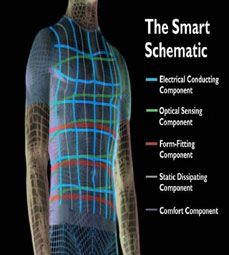Transhumanism Goes Mainstream
Transhumanism -- and the ethical questions surrounding it -- was the topic of a recent Stanford University bioethics conference.� Titled "Human Enhancement Technologies and Human Rights," the conference explored the rights of people to enhance their own bodies.�
The conference was notable because it took a step toward taking transhumanism out of the realm of theory and into a very practical line of thinking.� Indeed, the recent debates over steroid use in sports should alert us to the sorts of controversies that will accompany "biological contingencies" in the future:
[Bioethicist Anita] Silvers argues that the right not to be normal, is, in fact, the essence of freedom. Human beings, she argues, have always modified themselves, usually because we see the modifications as some kind of advantage. Banning it, as some have argued for, means forcing people to adhere to a government-imposed standard of normal.
The instinct to prevent people from making alterations to themselves worries British philosopher Andy Miah, a lecturer in media, bioethics and cyber culture at the University of Paisley in Scotland. “I explain it as a contempt for �Otherness.’ We seek to suppress people whom we feel are abnormal, mutants or monsters. Historically, societies have done this a lot. They continue to do it and I find it embarrassing.�
Such debate only scratches the surface of the transhumanist controversy.� Just as technologists worry about a "digital divide," so too will we have to come to terms with a "biological divide" that separates those who can afford body enhancements from those who cannot (in a sense, this exists already, as not everyone has the money to join a gym, get braces or cosmetic surgery).� But the types of transformations that transhumanists are considering may be far more drastic, leading to what are perhaps whole new classes of humans.� As he Barry Bonds controversy has demonstrated, that will be difficult to reconcile in a culture that values equality and fair play.
UPDATE: Transhumanism is Wikipedia's featured article for 6/2/06!
Source:� MSNBC





















